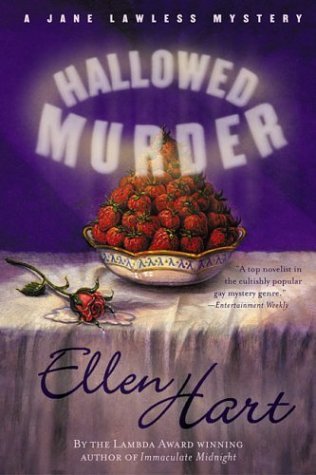 From the back cover:
From the back cover:
The police call Allison’s drowning a suicide, but her housemates at her University of Minnesota sorority insist it was murder. That’s when alumnae advisor Jane Lawless steps in to find out the truth.
Abetted by her irrepressible sidekick Cordelia, Jane searches for clues, and what she finds is as chilling as the Minnesota winter—for in those icy drifts, at a lonely vacation house, she risks everything to ensnare a cunning killer…
Review:
Minneapolis restaurateur Jane Lawless has volunteered to serve as an alumnae advisor for her former sorrority, Kappa Alpha Sigma. One morning, while out exercising with her reluctant friend, Cordelia Thorn, Jane discovers the body of one of the girls, Allison Lord. When the local police are quick to dismiss Allison’s death as suicide (which they attribute to confusion over her sexuality), Jane decides to do a little investigating of her own, eventually concluding that she’ll need to set herself up as bait to catch the killer.
I didn’t outright dislike Hallowed Murder, but it does have some major problems. Most significant is the fact that the culprit is not a surprise, thanks to a brief opening chapter that reveals their motive. Other aspects of the mystery are less transparent, though, and Hart at least managed to make me briefly suspect other characters. Speaking of the characters…. Jane is okay, and I like the aura of sadness that clings to her after the death of her long-time partner, Christine, but her friend Cordelia seems to have just one mode—obnoxious. Jane’s brother makes a couple brief appearances, but he is utterly insubstantial. Then there are the victim’s three closest friends, one of whom we scarcely meet before she apparently drops out of the sorority off-camera. Again, it’s not exactly bad, but it’s all quite superficial.
The same can be said of Hart’s writing style. As I look now at the quotes I jotted down, they don’t look so objectionable, but while I was reading they were jarringly simplistic. Too much tell, not enough show. Here are a couple of examples:
The early morning mist had settled around the base of the old bridge, making it appear to float above the water. It looked like a stage set. A perfect setting for a murder. Cordelia shuddered at her own morbidity.
Jane looked around at the young man taking notes. She had never been interrogated by the police before and did not like her words being cast in stone on some stenographer’s pad.
That second one could’ve been “Jane looked uneasily at the young man taking notes,†and it would’ve communicated all of that without seeming so… prim. This was a common problem, with dialogue and character thoughts frequently coming across as stiff and unnatural. Characters were also exceedingly forthcoming with their prejudices. Now, true, this was published in 1989, so perhaps open homophobia was more common, but characters with these opinions don’t even try to disguise them, and generally have no other positive attributes that would make them more three-dimensional—they’re just being used as ignorant mouthpieces. Here’s a quote from Susan Julian, another sorority advisor, after she learns about Allison’s sexual preference:
Having allowed a—I even hate to say the word—lesbian in our midst would destroy our reputation. We can only hope it doesn’t make the papers. I mean, no one would feel safe joining.
I haven’t yet decided whether to read Vital Lies, the second Jane Lawless mystery. The excerpt included in the back of my paperback was not very promising, but some mystery writers do improve over time. And, of course, Hart earns bonus points for managing to mention both Richard III and Doctor Who.


 The Plot
The Plot